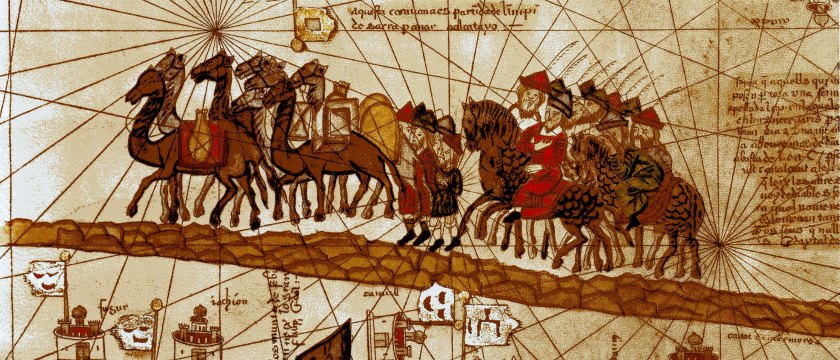The peace enforced by the ancient Romans in the lands under their control was often called Pax Romana. Likewise, the tranquility that set in for some time in Eurasia after the bloody Mongol conquests could be called Pax Mongolica. During this time, trade and religions flourished.
European Guests
Because of the Mongols’ tolerance for religion, missionaries of many faiths, including Plano Carpini and William of Rubruck, and the adventurer Marco Polo, enjoyed the opportunity to travel far and wide without fear. A Franciscan monk named Giovanni Da Montecorvino came to Khanbaligh in 1289 and converted thousands of people to Christianity before his death in 1322.
A Florentine Document Written About the Silk Road in 1340
Perfectly safe, whether by day or night, according to the reports of merchants who have used it… Whatever silver the merchants carry with them to Cathay, the lord of Cathay takes from them and puts in his treasury and gives that paper money of theirs in exchange… and with this money, you can readily buy silk and whatever other merchandise you desire to buy…
Free Trade in Pax Mongolica
Ibn-Batuta, a renowned Sudanese traveler, moved safely between Constantinople and India, China, Ceylon, and Indonesia. Missionaries also went from East and West. A monk by the name of Satsuma is known to have traveled to Paris from Central Asia. The Pax Mongolica was a heyday for merchants. Persian, Arab, Greek, and Western European traders peacefully engaged in commerce on the roads kept safe by the Mongols. This is how the Mongols brought free trade into world history for the first time.
The Benefits of Pax Mongolica
The paper money the Chinese used as a novelty for Europeans. During this period of free travel, Europeans learned the skills of printing from the Chinese, and Gutenberg’s first book came off the press in the fifteenth century. The free intercourse between civilizations resulted in a radical improvement of Westerners’ knowledge of arms, printing, ship production, and helmsman ship. The arts and architecture of the Middle East entered a new stage of development, as well. An observatory, ceramics and new varieties o grains from Persia, and different types of foodstuffs from India made their way into China. Meanwhile, China’s science of medicine and pharmacology was on an unprecedented rise, while the medical knowledge of the Arabs spread there, combined with Korean therapeutic methods. The library of the great Khan was stocked with thirty-six volumes of treatises on the Islamic sciences of medicine and drug making. Trade relations between Japan and nations to the southeast were also invigorated. Spaghetti, the national pride of the Italians, was an import from the Chinese. Marco Polo’s journeys triggered in Europeans the yearning to travel and discover new places and countries, which subsequently resulted in the navigator Magellan’s trip around the world and the discovery of America by Colombus, who had read Marco Polo’s book and who set out later on a three-ship expedition to find a new route to India. thus under the influence of the Mongol Empire, the roads of the vast Eurasian lands opened up.

